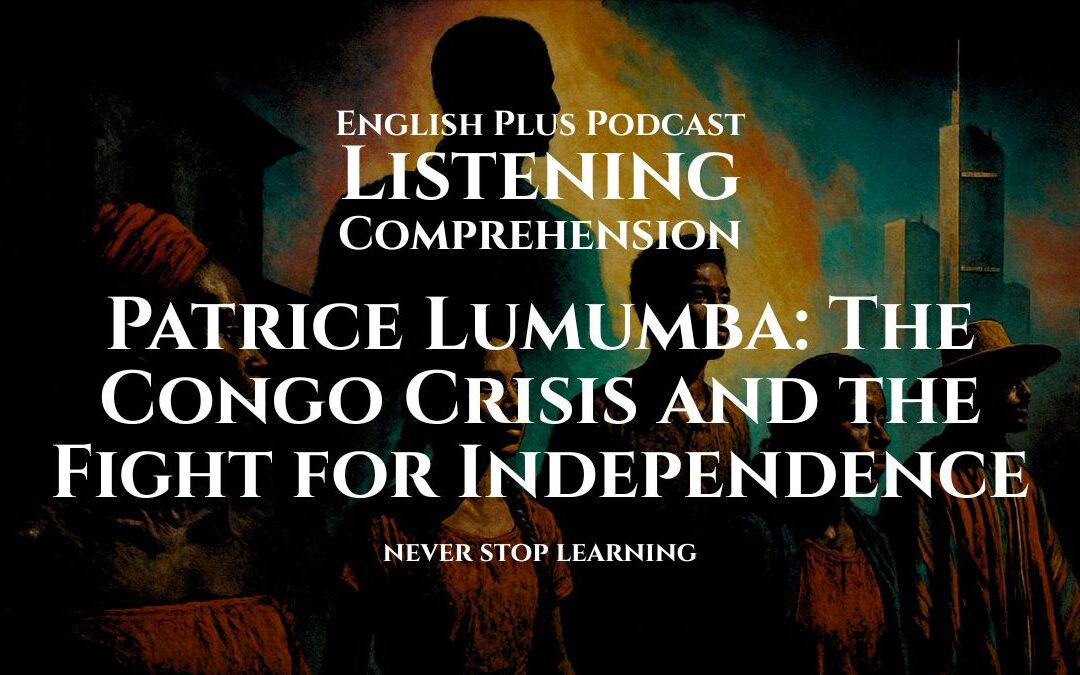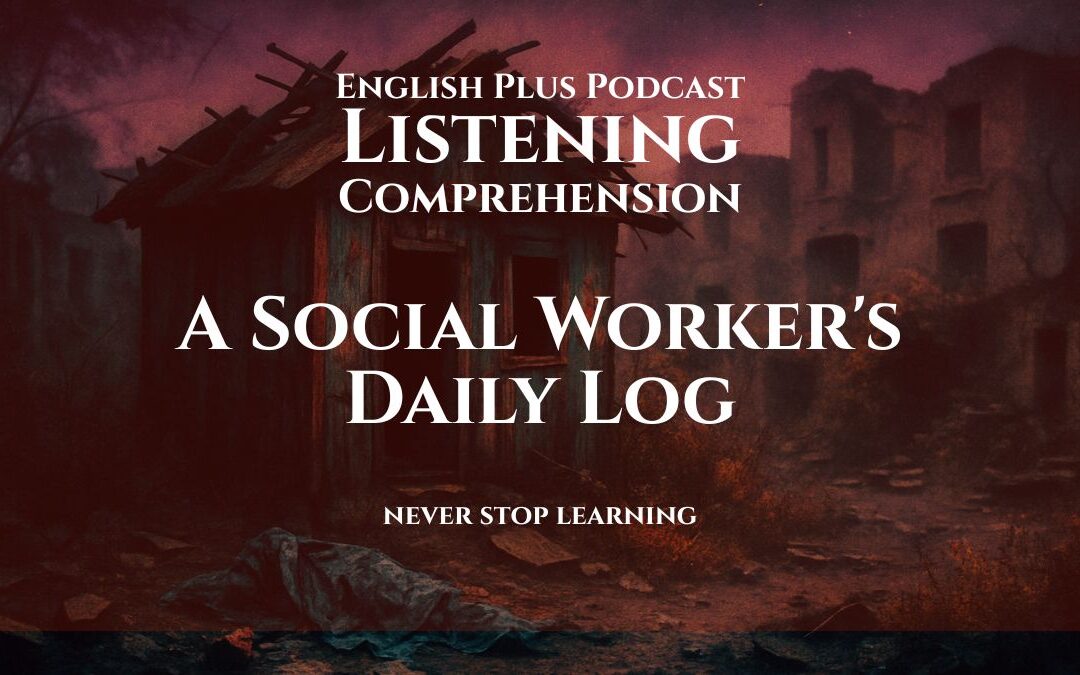- E-commerce: From Clicks to Delivery
- The Click: Browsing and Decision-Making
- Order Processing: Behind the Scenes
- Picking, Packing, and Fulfillment
- The Last Mile: Delivery to Your Doorstep
- Challenges in the E-commerce Ecosystem
- Innovations Transforming E-commerce
- Building Trust and Loyalty
- The Future of E-commerce
- Let’s Talk
- Let’s Learn Vocabulary in Context
- Let’s Discuss & Write
E-commerce: From Clicks to Delivery
The rise of e-commerce has transformed the way we shop, revolutionizing industries and customer experiences worldwide. From the moment a customer clicks “Add to Cart” to the delivery of a package at their doorstep, a complex and dynamic process unfolds. This article explores the journey of e-commerce, highlighting the key stages, challenges, and innovations that power this thriving industry.
The Click: Browsing and Decision-Making
The journey begins with a customer browsing an online store. Whether they’re shopping for clothes, gadgets, or groceries, their experience depends heavily on:
- User-Friendly Websites: Responsive design, intuitive navigation, and fast loading times are essential.
- Personalized Recommendations: Advanced algorithms analyze user behavior to suggest relevant products.
- Secure Payment Gateways: A seamless and trustworthy payment process is vital for building customer confidence.
Successful e-commerce platforms invest heavily in these areas to attract and retain customers.
Order Processing: Behind the Scenes
Once a customer places an order, the gears of e-commerce logistics start turning. This stage involves:
- Inventory Management: Ensuring the ordered item is in stock and ready for dispatch.
- Order Verification: Confirming payment and verifying order details to prevent fraud.
- Integration with Warehouses: Advanced software links the e-commerce platform with warehouse systems to streamline order fulfillment.
Efficient order processing is the backbone of a smooth shopping experience.
Picking, Packing, and Fulfillment
In warehouses, items are located, picked, and packed for delivery. Key innovations in this stage include:
- Automation: Robots and AI-powered systems speed up operations and reduce errors.
- Eco-Friendly Packaging: With growing environmental concerns, many businesses are shifting to sustainable packaging materials.
- Fulfillment Centers: Companies like Amazon have revolutionized this process with strategically located centers ensuring faster delivery times.
The Last Mile: Delivery to Your Doorstep
Delivery is the most visible part of the e-commerce journey. The “last mile” is also one of the most challenging due to its cost and complexity. Innovations shaping this stage include:
- Real-Time Tracking: Customers can monitor their packages in real-time, enhancing transparency.
- Contactless Delivery: A post-pandemic necessity, ensuring safety and convenience.
- Drones and Autonomous Vehicles: Emerging technologies promise faster and more efficient deliveries.
Logistics providers are constantly innovating to meet customer demands for speed and reliability.
Challenges in the E-commerce Ecosystem
While e-commerce offers convenience, it also comes with challenges:
- Scalability: Managing peak-season demands without compromising service quality.
- Cybersecurity: Protecting customer data from breaches and cyberattacks.
- Returns and Refunds: Streamlining these processes to maintain customer satisfaction while minimizing losses.
Businesses must address these challenges proactively to remain competitive.
Innovations Transforming E-commerce
Technology continues to redefine the e-commerce landscape. Key innovations include:
- Artificial Intelligence: From chatbots to predictive analytics, AI enhances personalization and efficiency.
- Augmented Reality (AR): AR tools allow customers to visualize products before purchasing, reducing return rates.
- Blockchain: Improving transparency in supply chains and securing transactions.
- Green E-commerce: Companies are adopting sustainable practices, such as carbon-neutral shipping and eco-friendly sourcing.
These advancements are shaping the future of online shopping, making it more accessible, efficient, and environmentally responsible.
Building Trust and Loyalty
For e-commerce businesses, customer trust is paramount. Here’s how successful platforms nurture loyalty:
- Exceptional Customer Service: Offering prompt and helpful support builds trust.
- Loyalty Programs: Rewarding repeat customers fosters long-term relationships.
- Transparent Policies: Clear shipping, returns, and refund policies enhance customer confidence.
Satisfied customers are more likely to return and recommend the platform to others.
The Future of E-commerce
E-commerce is no longer just about convenience—it’s about creating a seamless, memorable experience from clicks to delivery. As technology continues to advance, the industry will see even more innovative solutions, ensuring faster, greener, and smarter shopping journeys.
For businesses and consumers alike, the e-commerce journey is an evolving story, reshaping the global retail landscape one package at a time.
Let’s Talk
E-commerce is such a fascinating topic, isn’t it? It’s not just about the convenience of clicking a button and having something magically appear at your doorstep—there’s a whole universe of innovation and logistics happening behind the scenes. But have you ever thought about what this says about us as consumers? Why do we love it so much? Is it the time saved, the endless options, or maybe just the thrill of expecting a package? There’s something oddly satisfying about tracking a delivery and seeing it get closer and closer. Does it remind us of unwrapping gifts as kids?
Let’s talk about those last-mile deliveries for a second. Sure, drones and autonomous vehicles sound exciting, but can they ever replace the human touch of a friendly delivery person? Imagine you’ve just ordered something fragile or personal—like your mom’s birthday cake or a new guitar—and a drone drops it off. Would you feel as reassured? It makes me wonder if we’re so focused on speed and efficiency that we’re forgetting about the connection, the care, and the trust that come with human interactions. Maybe one day we’ll have AI delivery bots that apologize profusely if your parcel is late. But would that ever feel genuine?
And here’s a thought about personalization. We all love when online stores recommend things we might like, but do we ever stop to ask, how much do they really know about us? Have you ever been creeped out when a site suggests something you were just thinking about? It’s as if they’re reading our minds! Maybe it’s harmless, or maybe it’s a bit unsettling when algorithms seem to know us better than we know ourselves. It begs the question: are these recommendations always in our best interest, or are they subtly nudging us to buy things we don’t need?
Then there’s the sustainability side. E-commerce has undoubtedly revolutionized shopping, but what’s the environmental cost? Think about the packaging. Every online order comes with layers of plastic, cardboard, and bubble wrap. It’s great to see companies moving toward eco-friendly options, but how many of us actively think about the carbon footprint of those same-day deliveries? Would you choose slower shipping if it meant a smaller environmental impact, or are we too used to instant gratification?
Here’s a final thought—returns. It’s so easy to hit “return item” these days. Maybe that dress wasn’t the right size, or the gadget didn’t match its glowing online description. But have you ever wondered what happens to those returned items? In many cases, they aren’t resold but end up discarded, even if they’re perfectly usable. Crazy, right? So, should we be more mindful of our purchases, or is it up to companies to figure out more sustainable ways to manage returns?
E-commerce is changing how we live, shop, and interact with the world, but it’s not just about convenience. It’s about trust, transparency, and finding the right balance between technology and humanity. What do you think—are we heading in the right direction, or are we speeding too fast into a world of clicks without fully thinking about the consequences?
Let’s Learn Vocabulary in Context
Let’s break down some key words and phrases from the topic that can be super useful in everyday conversations. Take “user-friendly”, for instance. It means something that’s easy to use or navigate, like a website or an app. Think about the apps you use daily—are they as user-friendly as they could be? Imagine telling someone, “This app is so NOT user-friendly; I can’t even find the login button!”
Another great one is “inventory management”. It refers to how companies keep track of their stock. But this term works outside business too. Got a messy closet? You might joke, “I need some inventory management to find my left shoe!”
Then there’s “fulfillment centers”. These are the places where online orders are processed, packed, and shipped. But you can think of this in a fun way, like your local pizza place being your personal fulfillment center for cheesy goodness.
How about “last mile”? In e-commerce, it’s the final stage of getting a package to your door. You can use it metaphorically, too, like saying, “I’m on the last mile of this project—just need to finish the report!”
Let’s not skip “real-time tracking”, which means monitoring something as it happens. You could say, “I wish I had real-time tracking on my lost AirPods.”
Then there’s “eco-friendly”, which means good for the environment. You could casually say, “I’m trying to be more eco-friendly by carrying a reusable water bottle everywhere.”
“Returns and refunds” are such everyday terms but think about how you can use them in life. Say you lend a friend a book, and they promise to return it. “Your return policy is a bit slow!” could be a playful way to nudge them.
We also talked about “customer satisfaction”, which means keeping customers happy. Ever had a bad experience at a restaurant? You could say, “Well, their customer satisfaction strategy needs work!”
One more for good measure: “carbon footprint”. It’s about the impact of your activities on the environment. Next time you’re carpooling, you could proudly say, “We’re reducing our carbon footprint!”
Lastly, “instant gratification”, which is about wanting things immediately. It’s a fun one to use when someone is being impatient, like, “Can’t we wait five minutes? Not everything has to be instant gratification!”
To wrap it up, here are some questions: What’s one thing you’d change about how you shop online? Do you think e-commerce is making us less patient in real life?
Let’s Discuss & Write
Discussion Questions
- What do you think is the biggest challenge for e-commerce companies today, and why?
- How important is sustainability to you when shopping online, and do you think companies are doing enough in this area?
- Have you ever had a negative e-commerce experience, like delayed deliveries or misleading product descriptions? How did you handle it?
- If given the choice, would you trade faster delivery for lower environmental impact? Why or why not?
- How much do you trust personalized recommendations on e-commerce platforms? Do they feel helpful or intrusive to you?
Writing Prompt
Write about a memorable online shopping experience—good or bad. Describe what happened, how it made you feel, and what you learned from it. Focus on using vivid details to paint a picture of the situation, and try to include some of the vocabulary we discussed, like “user-friendly,” “real-time tracking,” or “instant gratification.” Aim for about 300-400 words, and don’t forget to reflect on whether the experience changed how you shop online.











0 Comments